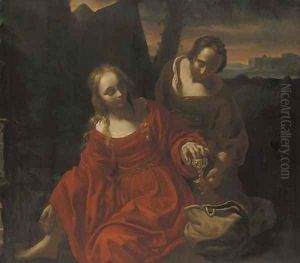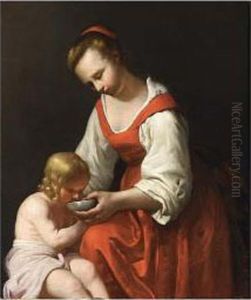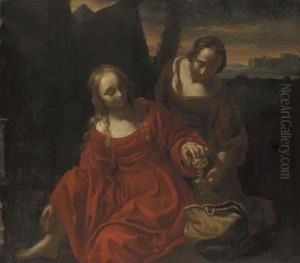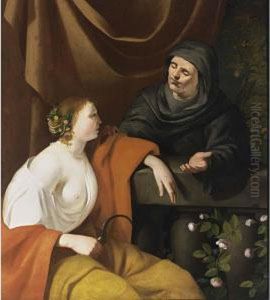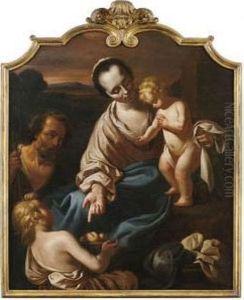Reyer Van Blommendae Paintings
Reyer van Blommendael was a Dutch Golden Age painter born in 1628 in Haarlem, Netherlands. He was known for his detailed and often opulent still-life paintings, as well as for his work in other genres such as portraiture and history painting. Van Blommendael's artistic training and early influences are not thoroughly documented, but it is believed that he was a pupil of the painter Pieter de Grebber, who was a prominent artist in Haarlem at the time.
Van Blommendael's style was characterized by a high degree of realism and attention to detail. This can be seen in his still-life works, which often included a rich array of flowers, fruits, and other objects arranged in intricate compositions. He was adept at capturing textures and surfaces, rendering everything from the delicate petals of flowers to the reflective surfaces of glass and metal with great skill.
Despite the high quality of his work, Reyer van Blommendael is not as well-known as some of his contemporaries, such as Jan Davidsz. de Heem or Willem Claesz. Heda, which may be due to the relatively small body of work he left behind. Records indicate that he was active as a painter in Haarlem until his death in 1673. Although his works were not as widely disseminated as those of some of his peers, his paintings are still appreciated today for their beauty and craftsmanship and can be found in various museums and private collections. Van Blommendael's legacy contributes to our understanding of the Dutch Golden Age and the era's fascination with the natural world as seen through the art of still life.
